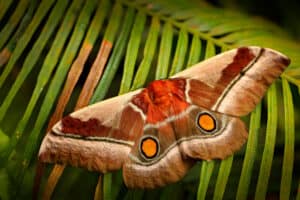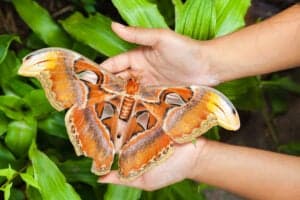Moths and Butterflies are Distant Relatives

Though they’re similar, there are many differences between moths and butterflies.
©Brett Hondow/Shutterstock.com
Baby moths and butterflies both spend the first stage of their lives as caterpillars, which explains why they’re often thought of as the same insect. While moths are often confused for butterflies, there are key differences. They’re members of the same family, Lepidoptera. These flying insects are born as eggs, become caterpillars, enter a pupa stage, and have wings covered in scales. They each have six legs, antennae, and three body sections.
A moth, however, is nocturnal, or active at night, while butterflies are diurnal, or active during the day. Some biologists believe that butterflies may have descended from moths as an adaptation to ensure food supply.
While butterflies spend their pupa stage in a chrysalis, moths spend their pupa stage in a cocoon. The caterpillar spins the cocoon with material from glands located on the body. The outer layer is soft and fabric-like. The moth caterpillar then makes a hard surface inside the cocoon for protection as it undergoes metamorphosis.
The Baby Moth: A Hibernating Insect
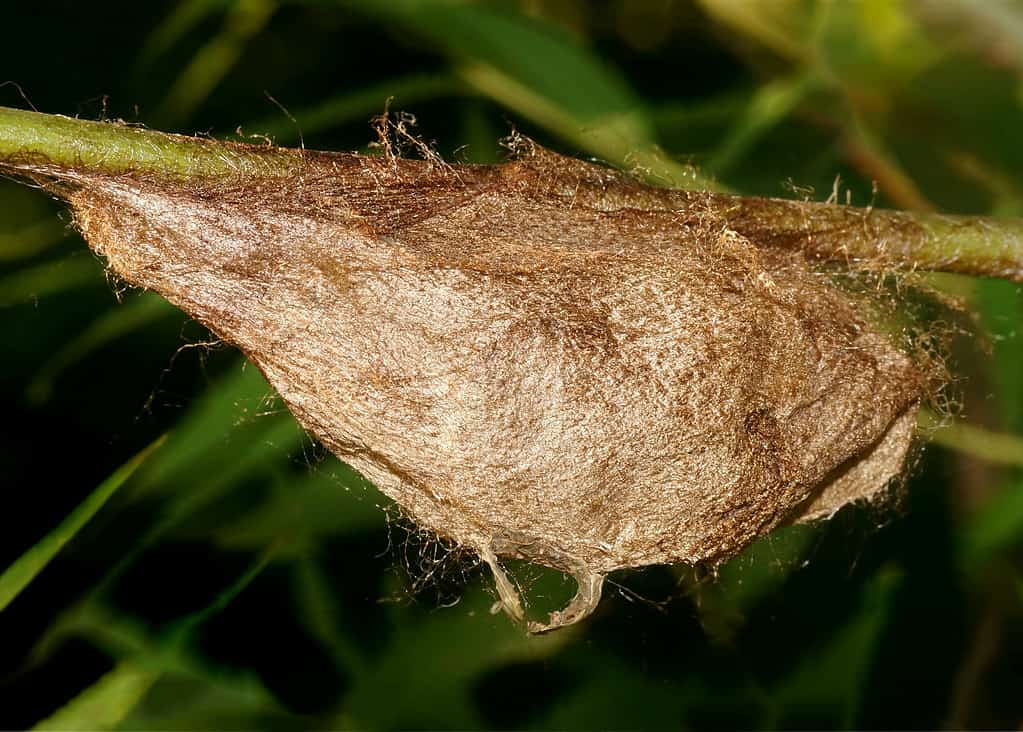
Unlike a chrysalis, a cocoon is soft on the outside.
©Matt Jeppson/Shutterstock.com
When a baby moth is born, it hatches from a tiny egg. Mother moths lay hundreds of these eggs on plants. The hatchling, called a caterpillar, eats vigorously to gain energy for the pupa stage. Once entering the pupa stage, moths form a cocoon. Some moths attach their cocoon to trees, while some bury themselves underground. Some moths, like the Luna moth, hibernate over winter and emerge in the spring. Moths are dependent on external heat sources to maintain their body temperature. Most adult moths will die in the fall, as ambient temperatures drop.
Moths are Masters of Disguise

The Death Head Hawkmoth’s unique pattern is self-defense. These eyespots trick predators into thinking the moth is another animal.
©Louis Hsu/Shutterstock.com
After emerging from its cocoon, a moth is vulnerable to predators. As its wings are wet, the moth won’t be able to fly. Moth wings have evolved into unique patterns to provide excellent camouflage for this reason. While both butterflies and moths have scales on their wings, the pigmentation of these scales is different. Butterly wing scales are more pigmented, while moth scales have less pigment. Scientists believe this is because dull scales reflect less light. As moths are nocturnal, dullness aids them in avoiding detection by predators.
Some moths have developed wing patterns that are intended to scare predators. The Polyphemus moth displays eyespots on its wings. These evenly-spaced circles are meant to make predators think the moth is another animal and deter attacks. One of the most evolved patterns of this survival mechanism is seen in the Death Head’s Hawkmoth, which has a face on its back.
Baby Moths are Born with a Body Part Butterflies Don’t Have

While some moths look like they only have two wings, every moth has four wings. Moths have a special structure that connects their wings.
©Gucio_55/Shutterstock.com
Look closely at a moth and you’ll notice a tiny, hook-like structure that connects the moth’s wings. This is called a frenulum and is absent in all butterflies. The frenulum makes the moth’s wings work together as a unit rather than independently. Butterflies don’t have this, which is why they flutter their wings. Moths also tend to rest with their wings flat, while butterflies rest with their wings upright. This may be rooted in self-preservation, as moth wings blend into surroundings better when flat. Butterfly wings tend to blend into flowers more when upright.
Moths are Hide and Seek Champions

Underwing moth camouflaged on tree bark.
©Jeanne Crockett/Shutterstock.com
Moths are vitally important to the ecosystem, as they’re a primary food source for many nocturnal animals. Hoary bats, Rafinesque big-eared bats, and European free-tailed bats feed almost entirely on moths. Despite having no natural defenses, moths have developed a secret weapon: super hearing. Moths can hear so well, they can register the sounds of a bat’s echolocation calls. This helps moths detect predators and flee before they become prey. Many moth wing patterns mimic their natural surroundings so well that they’re invisible to predators.
Moths Have an Extraordinary Sense of Smell

They look a little silly, but moth antennae serve a purpose vital to self-preservation.
©HWall/Shutterstock.com
If you’ve studied a moth’s antennae, you see that it looks different from a butterfly. Where a butterfly has a smooth, curved antennae, a moth has straight or slightly curved antennae that seem feather-like. Even if they look solid, all moth antennae are covered in these tiny hairs. These hairs help the moth have an incredible sense of smell, allowing the moth to detect chemicals in the air. Scientists have used moth antennae in air monitoring systems, flying drones equipped with antennae to measure everything from air quality to humidity. In addition to alerting the moth to dangers, this helps them find mates. Moths can smell a potential mate from up to seven miles away.
One Subspecies of Moth is Deadly as a Baby
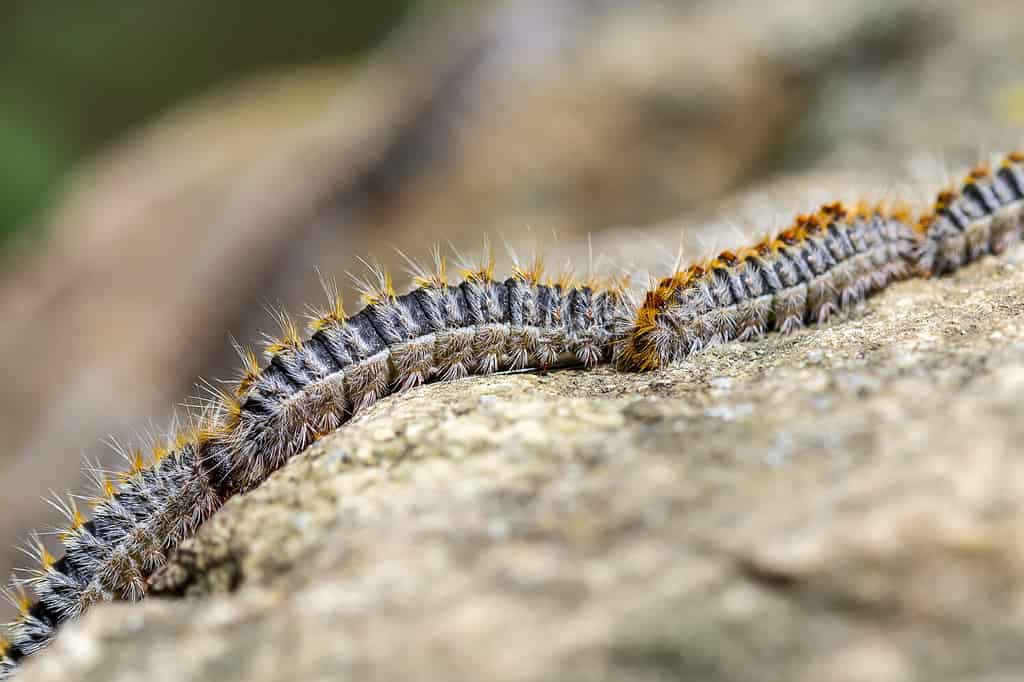
This tiny caterpillar has the potential to seriously harm or kill humans and pets.
©Gonzalo Jara/Shutterstock.com
Globally, there are over 160,000 subspecies of moths. They live on nearly every continent in the world, and in almost every climate. Some moths measure just centimeters, while others are as large as an adult’s hand. Not all of these moths are safe for humans to touch. Lonomia obliqua, the giant silkworm moth, is responsible for approximately 500 recorded deaths in its caterpillar stage. L. Obliqua is covered in tiny, hairlike spikes. These spikes contain a lethal poison that can cause symptoms ranging from headache and nausea to severe hemorrhagic syndromes. Not all hairy caterpillars are poisonous, but several species are.
More Fungus, Please. Baby Moths Love to Eat Mold
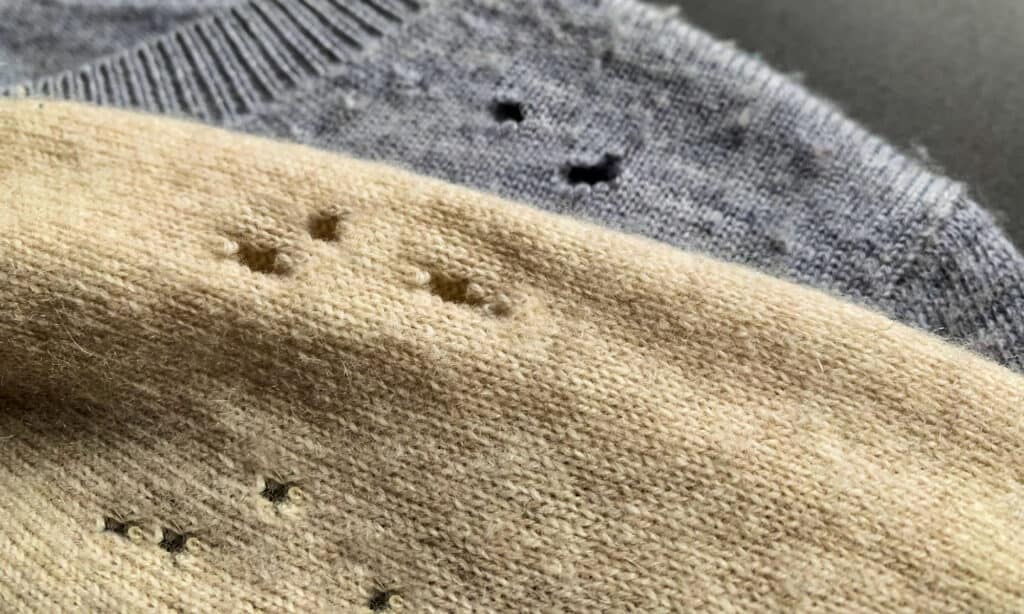
Some moths in the caterpillar stage love to eat mold, mildew, and fungi. Small particles that are invisible to the human eye can be found in the fibers of natural-material clothes, such as cashmere sweaters.
©Little Adventures/Shutterstock.com
While caterpillars, moths have mandibles and teeth for chewing leaves. Some, however, prefer to eat fungus. These moths are members of the Tineidae family. Over 3,000 species of moths are classified into this subspecies. These moths live almost exclusively on mold, fungus, and lichen. The Gypsy Moth caterpillar, for example, prefers to eat leaves that are infected with fungus. This family of moths is responsible for fabric and clothing damage. Once they enter the pupa stage and emerge as adults, the mandible has been replaced with a proboscis. Just like butterflies, most moths eat nectar from plants.
Some Moths Build Houses for Protection

As seen here with tent caterpillars, some baby moths build homes to evade predators.
©Wirestock Creators/Shutterstock.com
If you’ve ever noticed large webs in trees, you’ve seen the work of the webworm. It’s not a worm at all, but the caterpillar stage of Hyphantria cunea. Native to North America, these baby moths develop in expansive nets in the branches of trees during late summer and fall. While their presence won’t harm healthy trees, most homeowners view them as a pest. The netting serves to protect the caterpillars from birds and other predators until they’re ready to enter their cocoons. This netting is not created by the caterpillars but rather by the mother as she lays her eggs. Tent caterpillars, Malacosoma disstria, are a similar moth species, though they appear mainly in the spring and summer. Unlike webworms, tent caterpillars can cause damage to the trees they inhabit.
The photo featured at the top of this post is © K Quinn Ferris/Shutterstock.com
Thank you for reading! Have some feedback for us? Contact the AZ Animals editorial team.




